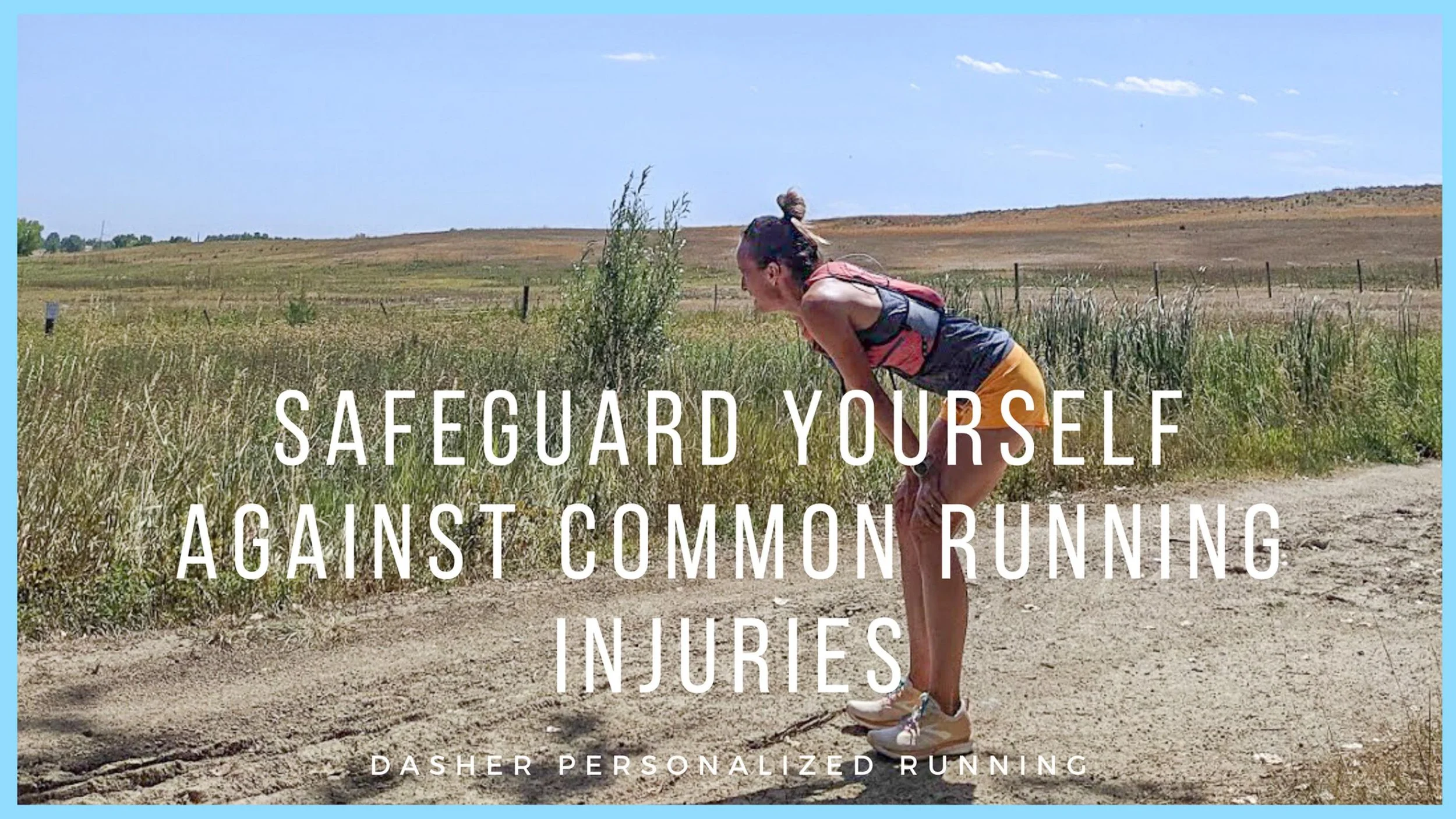Safeguard yourself against common running injuries
It is probably not surprising that the top five most common injuries all occur in the lower half of the body:
Medial tibial stress syndrome, aka “shin splints”
Patello-femoral pain syndrome, aka anterior knee pain or “runner’s knee”
Achilles tendinopathy
Iliotibial band syndrome
Plantar fasciitis
Lucky for us, there are overarching protective tactics that can safeguard runners against all of them. Here’s the scoop:
Protective tactics
#1: Progress training appropriately. Have patience and prioritize recovery as much as workouts. This is where hiring a coach can be immensely helpful. A coach can remove the stress of developing a training plan, while also providing confidence that you are not doing too much, too soon, keeping your injury risk low. If a coach isn’t in the cards financially, remember that most offer hourly consulting services and you can ask her/him to review the plan you’ve created and make suggestions.
#2: Rotate your shoes; retire them young. Invest in two or more pairs of shoes and use each during alternating runs. This will give more time for the foam and supportive structures within the shoes to re-expand, allowing for better support and cushion during your run. On that note, try not to wait and retire shoes once you feel pain or a niggle, or they reach their 500 mile birthday. Most shoes, especially lighter or racing shoes, reach their limit way before that mark. Look for permanent creasing or cracking in the foam or any moderate wear and tear. See it? Replace it!
#3: Enjoy variation in training. It is important to challenge your body in various ways, so have fun with intervals, tempos, and strides, as well as drills and strength! Bring all the fun to the party! The more athletic you are, the more well rounded you are, the more resilient you are. This applies to every runner.
#4: Run socially. Yes! This was included in a systematic review of the literature. Running with a group lowered overall injury risk in runners. So, enjoy what you are doing with some fun running friendos.
#5: Be dynamic with light impact. Soft, light foot strikes and quick strides are associated with lower injury risk, as this reduces what we call, “ground reaction forces”, or impact forces. Aim for a cadence above 175 strides/minute. A cadence lower than this often correlates to heavier foot strikes and higher impact forces, placing more strain through muscles, bones & ligaments. To increase your cadence, think of shortening your stride from the front, not limiting your push off in the back. Land under your body then fully extend through your hip, knee, ankle and finally, big and second toe.
Implementing even one of these strategies can help improve your longevity and allow you to run longer, faster and with more enjoyment. That said, start slow. Choose one that seems most interesting to you, then slowly introduce others over time.
Cheers to easy tactics with big impacts on resilience!
Happy trails!
Coach Asher
ABOUT THE AUTHOR
Dr. Asher Kyger Henry, PT, CSCS, PES
Asher is a sports physical therapist, run and strength coach at Dasher Personalized Running. She partners with trail and road runners to create training programs that maximize joy and mitigate injury.



